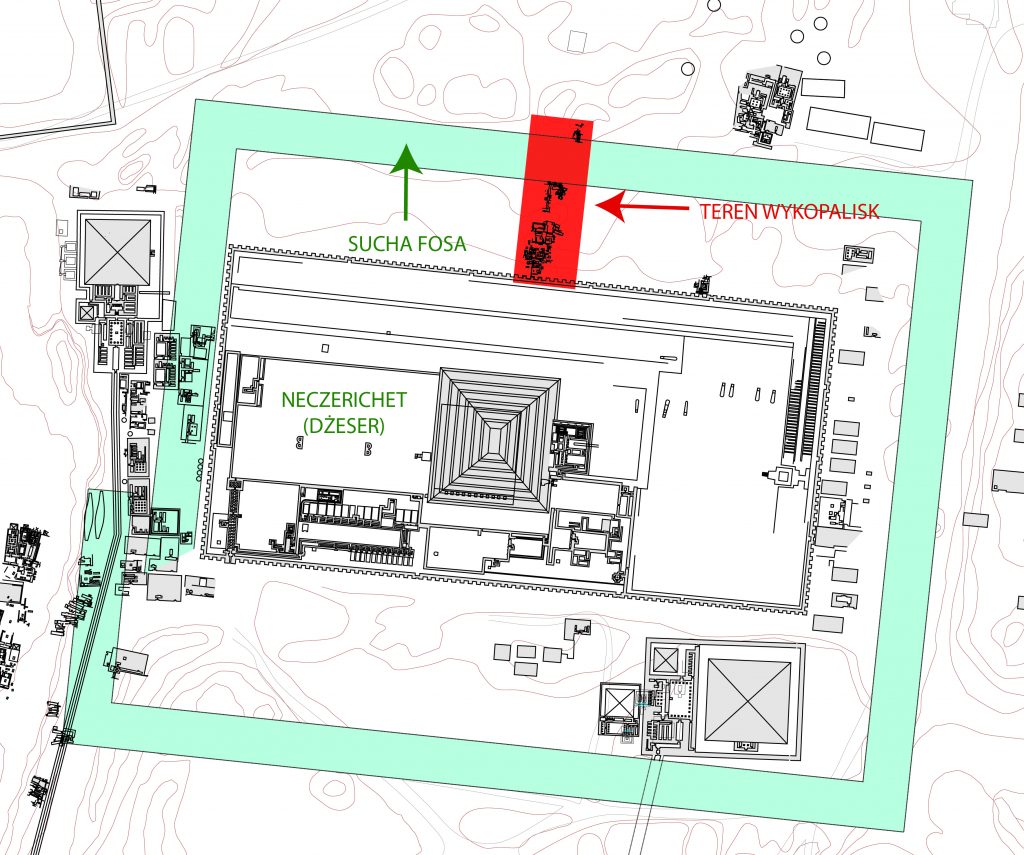Sucha Fosa, ogromny, wykuty w skalnym podłożu rów otaczający obszar około 750 na 600 metrów wokół kompleksu grobowego Neczericheta, został po raz pierwszy zidentyfikowany przez Nabila Swelima w 1985 roku. Prace Polsko-EgipskiejMiji Archeologicznej potwierdziły jego istnienie po zachodniej stronie i dostarczyły dodatkowych informacji wskazujących na jego praktyczne i ideologiczne znaczenie.

Zobacz także:
N. Swelim, The great Dry Moat surrounding the step pyramid complex, 4th International Congress of Egyptologists, Abstract of Papers, Munich 1985
N. Swelim, The Dry Moat of the Netjerykhet Complex, Pyramid Studies and Other Essays Presented to I.E.S. Edwards, J. Baines, T.G.H. James, A. Leahy, A.F. Shore (eds.), London 1988, pp. 12-22
N. Swelim, The Dry Moat, the South Rock Wall Of the Inner South Channel, Timelines, Studies in Honour of Manfred Bietak, E. Czerny, et al. (eds.), OLA 149, 2006, pp. 363-376 E. Czerny, et al. (eds.), OLA 149, 2006, pp. 363-376
T. Herbich, A. Jagodziński, Geophysical Investigation of the Dry Moat of the Netjerykhet Complex in Saqqara, Man – Millennia – Environment. Studies in Honour of Romuald Schild, Z. Sulgostowska, A.J. Tomaszewski (eds.), Warsaw 2008, pp. 273-279
Myśliwiec K., The “Dry Moat” west of the Netjerykhet enclosure, The Old Kingdom Art and Archaeology, Proceedings of the Conference held in Prague, May 31 – June 4, 2004, M. Bárta (ed.), Prague 2006, pp. 233-237
Kuraszkiewicz K., Afterworld for Netjerykhet, Old Kingdom, New Perspectives. Egyptian Art and Archaeology 2750-2150 BC, N. Strudwick, H. Strudwick (eds.), Oxford 2011, pp. 139-142

